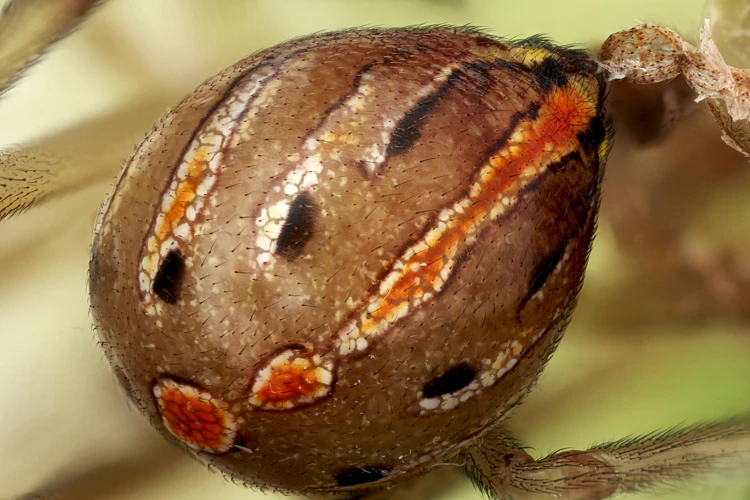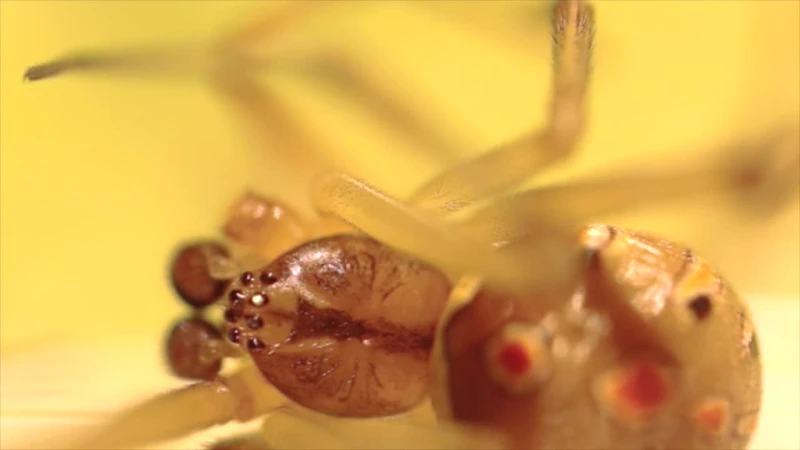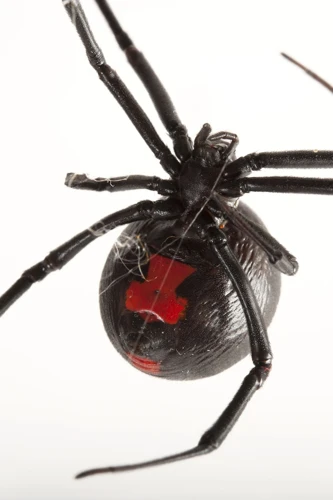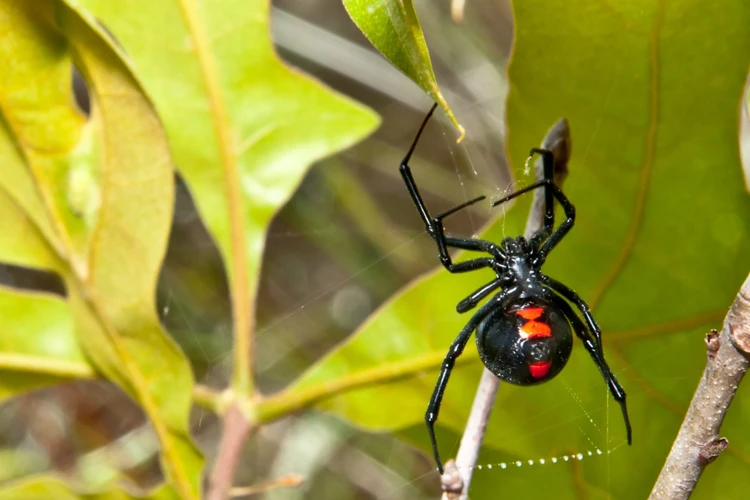As we watch spiders go through their life cycles, it can be both fascinating and eerie to observe the molting process. Black widow spiders are no exception to this, and understanding their molting process during the maturation stage can shed light on their development. From the stages of molting to the impact it has on their growth and behavior, there are many elements to explore. Let’s take a closer look at the molting process of black widow spiders and debunk some common misconceptions along the way.
What is molting?

What happens during molting in black widow spiders? As one of the key aspects of the maturation stage, molting is an important process in the life cycle of black widow spiders. Molting refers to the shedding of the spider’s outer skin layer, or exoskeleton, as it grows and matures into an adult. During this process, the spider undergoes a series of physiological changes that prepare it for the next phase of its life. Understanding the molting process is essential for managing black widow spiders effectively and ensuring their survival.
Definition of molting
Molting is a vital process in black widow spider maturation. It is defined as the process where a spider sheds its old exoskeleton, and a new exoskeleton is formed. This allows the spider to grow, as the exoskeleton limits its growth. The exoskeleton is made up of a protein called chitin, which is a hard and rigid material that provides protection to the spider. During molting, the spider breaks down the chitin in its old exoskeleton and reabsorbs it as nutrients to create a new exoskeleton. This process can take up to several hours to complete, and the spider is vulnerable to attacks during this period.
Molting is a natural process that all spiders go through, and it allows them to reach sexual maturity. It is controlled by hormones, and its frequency is dependent on various factors such as prey availability, population density, and the spider’s size. Female black widow spiders molt more frequently than males due to their higher energy requirements during egg production.
To better understand the process of molting in black widow spiders, a comparative study of maturation in male and female black widow spiders found that females molt more often than males. Another study on prey availability and maturation rate in black widow spiders found that reduced prey availability leads to reduced growth and delayed maturation.
Molting has a significant impact on the growth and behavior of black widow spiders. As spiders grow, their exoskeletons become too small, and they need to molt to accommodate their growth. During molting, the spider’s exoskeleton is soft, which makes it vulnerable to predators. This vulnerability makes the spider cautious and less active during this period.
There are several misconceptions about molting in black widow spiders. One of the misconceptions is that molting is painful for the spider. However, this is not true as the spider produces a hormone that numbs its body during the molting process. Another misconception is that black widow spiders only molt once. This is not true as they molt several times before reaching sexual maturity. Lastly, it is a common misconception that male and female black widow spiders molt at the same rate. This is not true as female spiders molt more frequently than males due to their reproductive requirements.
Understanding the molting process in black widow spiders is essential for spider management. Experts can use this knowledge to better manage spider populations and avoid potential health hazards associated with black widow spider bites. It is also important for people to avoid disrupting spiders during the molting process as this can cause physical harm to them.
Why do black widow spiders molt?
Black widow spiders molt to grow and mature. Molting is a crucial stage in the development of these spiders, as it enables them to shed their old exoskeleton and replace it with a new, larger one. During the molting process, black widow spiders undergo a significant physiological change, which enables them to continue growing.
The primary reason why black widow spiders molt is that their exoskeletons do not grow. As these spiders grow in size and mass, their exoskeletons become too small, and they need to shed the old one to make way for a new, larger one. Molting allows black widow spiders to grow and develop into mature adults.
Another reason why black widow spiders molt is that it enables them to replace damaged or lost body parts. Just like any other living creature, black widow spiders can lose limbs or sustain injuries. Molting allows them to regenerate their bodies, including their legs, pedipalps, and other appendages.
Molting is also essential for black widow spiders to reach sexual maturity. Male black widow spiders need to reach sexual maturity before they can mate with females, while female black widow spiders need to molt to produce viable eggs. Molting plays a crucial role in the reproduction and survival of black widow spiders.
Molting is a critical process for black widow spiders as it enables them to grow, regenerate lost body parts, and reach sexual maturity. It is fascinating to observe how these spiders undergo physiological changes during the molting process to become mature individuals that can contribute to the population’s survival.
The molting process of black widow spiders

As black widow spiders grow and develop, they go through a process known as molting. Molting is a crucial part of the maturation stage for these spiders and is an essential means of growth and development. During this process, black widow spiders shed their outer skin layer, revealing a shiny, new exoskeleton underneath. This article will delve into the intricate details of the molting process for black widow spiders, including the stages, frequency, and impact on their growth and behavior. We will also dispel common misconceptions surrounding this natural process. Let’s explore the fascinating world of black widow spider molting!
The stages of molting in black widow spiders
The molting process in black widow spiders happens in several stages. The first stage is called the pre-molt stage, which is characterized by a decrease in feeding, sometimes up to two weeks before molting. During this stage, the spider secretes enzymes that dissolve the old cuticle. As a result, a small gap forms between the old cuticle and the underlying epidermis. This gap is filled with lymphatic fluid secreted by the epidermis, which provides a way for the spider to expand during molting.
The second stage is called ecdysis, which is the actual molting process. At this point, the spider will have shed the old cuticle and the new cuticle has hardened. The new cuticle is very soft and flexible, which is why the spider needs to hide and protect itself during this process. During this stage, the spider will be vulnerable to predators and unable to move quickly.
The third and final stage is called post-molt, which is characterized by the spider’s retraction from the molted exoskeleton. At this point, the spider’s new cuticle is still somewhat soft and susceptible to injury. The spider needs to stay in a secure location until its new cuticle has completely hardened. In the post-molt stage, the spider will also consume the old exoskeleton to regain some of the nutrients lost in the shedding process.
It is important to note that the frequency of molting in black widow spiders varies depending on factors such as age, sex, and environmental conditions. Researchers found that molting frequency is influenced by population density and mating status. High population density, for example, can cause molting to occur less frequently and the individual spiders to be smaller in size. Males also tend to molt more often than females, which may be due to the increased energy expenditure required for male web-building behavior during mating season.
How often do black widow spiders molt?
Black widow spiders typically molt 5-8 times during their maturation stage. The frequency of molting depends on several factors such as maturation rate, population density, and hormonal cues. The maturation rate of male and female black widow spiders is not the same, with females maturing at a slower rate than males. Additionally, the population density of black widows can also influence molting frequency. In areas with high population density, spiders may molt less frequently due to limited resources.
Research suggests that hormonal cues also play a role in the molting process of black widow spiders. In a comparative study on the maturation of male and female black widow spiders, it was found that hormones such as ecdysone and juvenile hormone regulate the molting process. These hormones are responsible for regulating the timing and frequency of molting in black widow spiders.
The table below summarizes the average number of molts black widow spiders undergo during their maturation stage:
| Age (months) | Number of molts |
|---|---|
| 1-3 | 1-2 |
| 4-6 | 3-4 |
| 7-12 | 5-6 |
| 12+ | 7-8 |
It is important to note that molting frequency can vary among individuals and can be affected by environmental factors. Factors such as temperature, humidity, and the availability of food and water can all impact the molting process of black widow spiders. Interestingly, research has also suggested that web-building behavior can also influence the molting process.
In the next section, we will discuss how molting affects the growth and behavior of black widow spiders.
How molting affects the growth and behavior of black widow spiders

When it comes to the black widow spider’s growth and behavior, molting plays a crucial role. Each molting stage marks a milestone in the spider’s life, representing an opportunity for growth, maturation, and change. Although many believe that molting is a painful and stressful process for the spider, it is in fact a normal, natural, and necessary part of their life cycle. Let’s take a closer look at how molting impacts the growth and behavior of black widow spiders. We will also address some of the common misconceptions people hold about this process.
To learn about the comparative study on the maturation of male and female black widow spiders, check out the comparative study on maturation.
How molting impacts the size and color of black widow spiders
During the molting process, black widow spiders shed off their old exoskeleton and grow a new one. This process impacts the size and color of these venomous creatures. Their size increases with every molt. A juvenile black widow spider is smaller than an adult one since molting is a sign of maturation. With every molt, it grows in size until it reaches its full size.
As for the color, molted black widow spiders have a lighter hue compared to their older exoskeleton. They look pale and have not developed their distinct black color yet. Their bodies darken and the signature red hourglass mark on their abdomen is more visible as they become more mature. It is interesting to note that the color of black widow spiders is not determined by its species but by its age and sex.
Internal link: Maturation Process of Black Widow Spider Management
To summarize, molting impacts the size and color of black widow spiders as they grow in size and develop a darker hue as they mature. Their coloring is an indicator of their age and sex rather than their species. These changes have significant implications in managing black widow spider populations since they indicate the maturation rate and population density of black widows in an area.
How molting affects the behavior of black widow spiders
Molting is a critical process for black widow spiders. During molting, the spider sheds its old exoskeleton and grows a new one. This process affects not only the physical appearance but also the behavior of the spider. Here are some ways in which molting affects the behavior of black widow spiders:
1. Changes in feeding behavior: Molting can affect the feeding behavior of black widow spiders. When a spider is about to molt, it may become less active and stop eating altogether. This is because the energy required for molting is so great that the spider needs to conserve all of its resources.
2. Increased aggression: Molting black widow spiders may become more aggressive than usual. This is especially true for females, who are more likely to display aggressive behavior during molting. The reason for this aggression is not entirely clear, but it may be related to the vulnerability of the spider during molting.
3. Changes in web building behavior: Molting can also affect the web-building behavior of black widow spiders. Prior to molting, spiders often build protective silken shelters for themselves. They may also change the location of their webs, possibly to avoid predators or take advantage of more favorable conditions. Female black widow spiders often rebuild their webs after molting.
4. Temporary vulnerability: The shedding of the old exoskeleton and the growth of a new one leaves the spider temporarily vulnerable. During this time, the spider cannot move as quickly or defend itself as effectively. This vulnerability may explain the increased aggression that black widow spiders display during molting.
Understanding the behavioral changes that occur during molting is an important part of studying the life cycle and behavior of black widow spiders. Knowledge of these changes may also be useful in managing populations of black widow spiders, especially in areas where they pose a risk to human health and safety.
Source: Web Building Behavior of Black Widow During Maturation.
Common misconceptions about molting in black widow spiders
It’s not uncommon for misconceptions to arise around certain aspects of different species of animals, and the molting process of black widow spiders is no exception. These misconceptions can lead to misunderstandings and fears about these creatures that are often unwarranted. Let’s take a closer look at some of the most common misconceptions about molting in black widow spiders and why they are inaccurate. Before that, it’s worth noting that the molting process is an essential part of the maturation of black widow spiders.
Misconception #1: Molting is painful for black widow spiders
Misconception #1: There is a common misconception that molting is a painful process for black widow spiders, but this is not entirely true. While molting can be a stressful and strenuous process for the spider, it is not necessarily a painful one.
During molting, the black widow spider’s old exoskeleton splits open and the spider crawls out of it. The new exoskeleton is soft and pliable, and the spider is vulnerable to predators until it hardens. While it is true that the spider may experience some discomfort, such as itching or cramping, it is not likely that it experiences pain.
One possible reason for this misconception is the assumption that molting in spiders is similar to shedding in mammals. However, the two processes are quite different. While shedding in mammals involves the loss of hair or skin cells, molting in spiders involves the shedding of the entire exoskeleton.
It is important to note that while molting may not be painful for black widow spiders, it is still a crucial process for their survival and growth. Without molting, the spider would not be able to grow and develop properly.
To learn more about the maturation rate and population density of black widows, see our article on black widow spider maturation and population density. Additionally, understanding the risks associated with maturation in black widow spiders can help dispel misconceptions. Check out our article on black widow spider maturation and risk for more information.
Misconception #2: Black widow spiders only molt once
It is a common misconception that black widow spiders molt only once in their lifetime. However, this is not true. Black widow spiders go through multiple molting processes throughout their maturation stage.
During its first year, a female black widow spider typically molts 6-8 times, while males may molt less. It is important to note that the frequency of molting may vary depending on various environmental factors such as temperature, humidity, and the availability of food.
A molting black widow spider releases a hormone called ecdysone, which signals the spider to shed its old exoskeleton and grow a new one. The entire process of molting can take anywhere from a few hours to several days.
It is vital for black widow spiders to shed their old exoskeleton as it restricts their growth. If they do not molt, their old exoskeleton can suffocate them and ultimately lead to their death. A new exoskeleton allows black widow spiders to adjust to their changing environment and acquire new abilities, such as greater flexibility and mobility.
It is a misconception that black widow spiders molt only once. In fact, they go through multiple molting processes throughout their maturation stage, shedding their old exoskeletons and growing new ones to facilitate their growth and survival.
Misconception #3: Male and female black widow spiders molt at the same rate
It is a common misconception that male and female black widow spiders molt at the same rate. However, this is far from the truth. There are significant differences in the molting process of male and female black widow spiders.
Table: Differences in the Molting Process of Male and Female Black Widow Spiders
| Male Black Widow Spiders | Female Black Widow Spiders | |
|---|---|---|
| Frequency of Molting | Male black widow spiders molt less frequently than female black widow spiders | Female black widow spiders molt more frequently due to their larger size and faster growth rate |
| Size Increase after Molting | Male black widow spiders grow less in size after molting compared to females | Female black widow spiders may increase their size by up to 15% after each molting event |
| Behavior after Molting | Male black widow spiders do not exhibit significant changes in behavior after molting compared to females | Female black widow spiders may exhibit more aggressive behavior and increased feeding activity after molting |
Male black widow spiders generally molt less frequently than females. This is due to their smaller size and slower growth rate. Male black widows also do not increase in size as much as females after molting.
On the other hand, female black widow spiders molt more frequently due to their larger size and faster growth rate. After each molting event, female black widow spiders can increase their size by up to 15%.
There are behavioral differences between male and female black widow spiders after molting. Male black widow spiders do not exhibit significant changes in behavior while females may become more aggressive and exhibit increased feeding activity after molting.
There are significant differences in the molting process of male and female black widow spiders. It is important to understand these differences to dispel any misconceptions and learn more about the growth and behavior of these fascinating creatures.
Conclusion
In conclusion, molting is an essential part of the maturation process in black widow spiders. It allows them to shed their old exoskeleton and grow into their new one, enabling them to accommodate their expanding bodies. Molting also plays a crucial role in the development of their behavior.
Although the molting process is relatively well understood, there are some misconceptions surrounding it. It is not painful for black widow spiders, and they do not molt only once. Additionally, male and female spiders molt at different rates.
Understanding the molting process of black widow spiders is necessary for anyone interested in studying their behavior and biology. Knowing the stages of molting, why it happens, and how it affects the growth and behavior of these spiders is vital to gaining a deeper understanding of their lives.
In conclusion, molting is an essential process for black widow spiders. It enables them to grow and develop throughout their lives, and it impacts their behavior and biology in important ways. As researchers continue to explore the mysteries of these fascinating creatures, understanding their molting process will remain a crucial area of study.
Frequently Asked Questions
What triggers molting in black widow spiders?
Molting is triggered in black widow spiders by a hormone called ecdysone, which is released by glands in the spider’s body.
How long does the molting process take for black widow spiders?
The molting process for black widow spiders can take anywhere from a few hours to several days, depending on the spider’s age and size.
What happens during the molting process?
During molting, black widow spiders shed their old exoskeleton and form a new one. This process allows the spider to grow and mature.
What are the stages of molting in black widow spiders?
The stages of molting in black widow spiders include the pre-molt stage, ecdysis stage, and post-molt stage.
How does molting impact the size and color of black widow spiders?
Molting allows black widow spiders to grow and shed their old exoskeleton, which may be discolored or damaged. This can result in a darker, more vibrant coloration.
Black widow spiders typically molt four to six times before reaching maturity, which usually takes one to two years.
Why do male and female black widow spiders molt at different rates?
Male and female black widow spiders have different life expectancies, with males typically living only six to seven months, while females can live up to three years. This difference in lifespan affects their molting rates.
Can black widow spiders die during molting?
Yes, black widow spiders are susceptible to injury or death during molting, as their soft exoskeleton is more vulnerable to damage.
What is the best way to care for black widow spiders during molting?
The best way to care for black widow spiders during molting is to ensure that they have a safe, quiet space where they won’t be disturbed. It’s also important to avoid handling or disturbing the spider while it is molting.
What should I do if I find a black widow spider molting in my home?
If you find a black widow spider molting in your home, it’s best to leave it alone and avoid disturbing it. If you’re concerned about the spider’s presence, contact a pest control professional for assistance.






